Currant Tomatoes – Plant Spotlight
Learn why currant tomatoes are an excellent addition to your garden and how to grow them! We’ll also focus on two varieties of currant tomatoes- Gold Rush Currant and Sweet Pea Currant. Both tomatoes are grown and cared for in the same way.
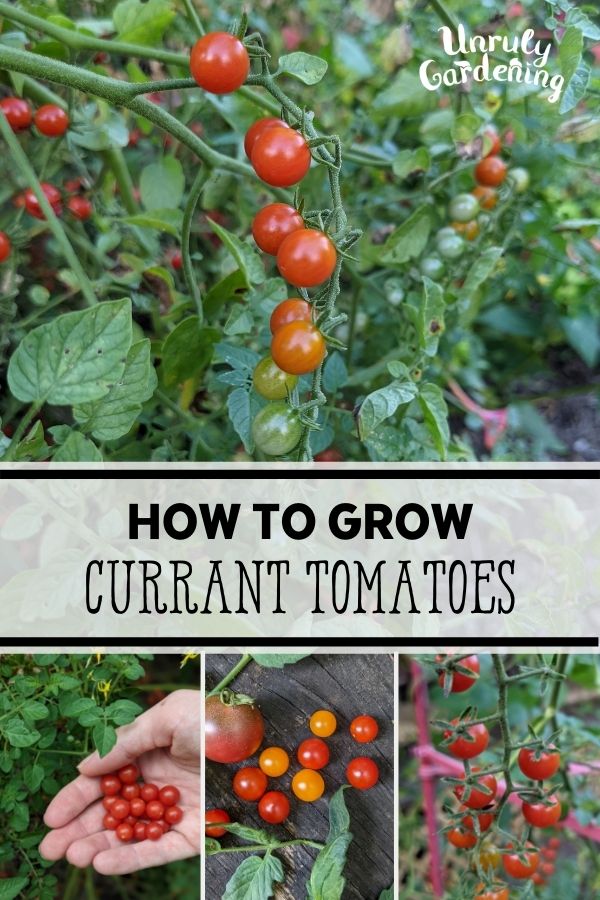
About Currant Tomatoes
These bright, pea-sized heirloom delights look similar to currants in both size and appearance, though currants have a more ‘transparent’ quality to them.
Currant tomatoes produce tons of fruit- just one or two plants will produce more than our household can eat! With the right conditions, the plants can turn into a massive, sprawling bush of bright greenery and vivid fruits (though you’ll have to go hunting for them, at first- the fruits like to turn from the inside of the plant out!).
The fruits- either a deep, rich red, or a golden yellow- are very lightweight, to the point that a single one wouldn’t even register on our normal scale! We had to pull out the super-sensitive one to measure in grams instead. On average, currant tomatoes weigh just about 1 gram each.
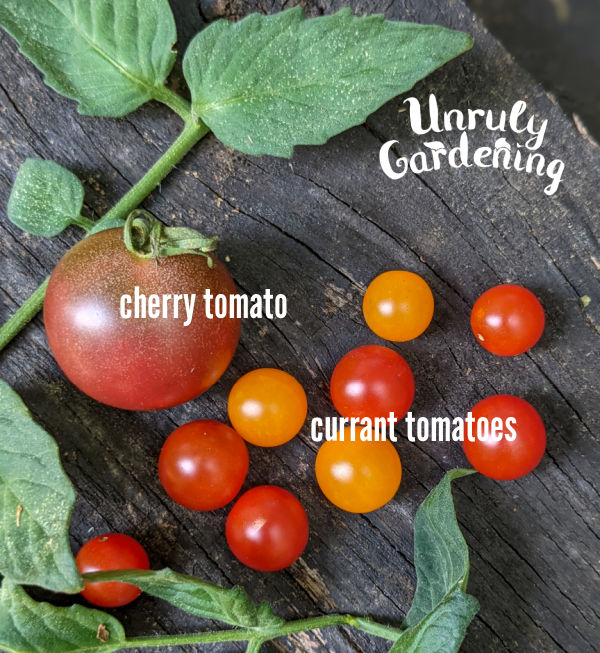
Two Currant Tomato Varieties We Love!
Both Gold Rush and Sweet Pea currant tomatoes are open-pollinated, and will grow true from seed.
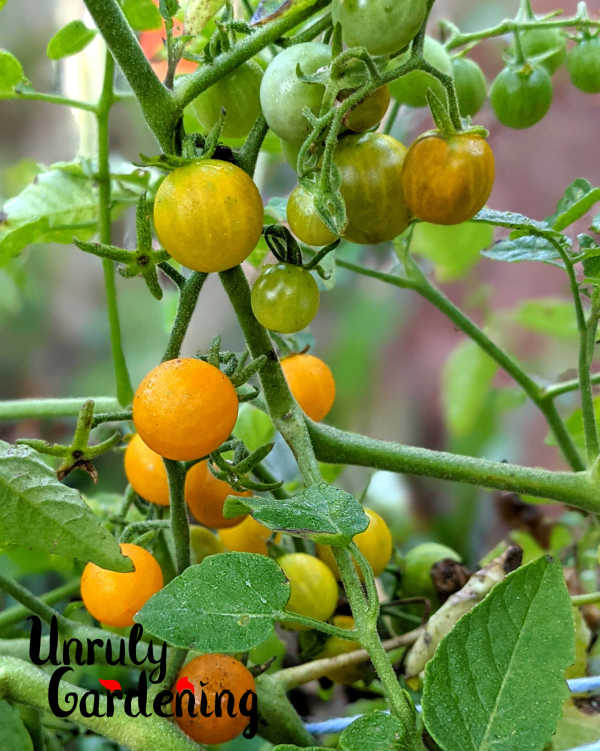
Gold Rush Currant
- Plant: Currant Tomato (Lycopersicon pimpinellifolium)
- Determinate or Indeterminate: Indeterminate
- Color: Yellow/Orange
- Days to Maturity: 75-80 (from transplant)
- Frost-Hardy: No
- Lifespan: Tender perennial grown as an annual
- When to Plant: Start indoors 6-8 weeks before estimated last frost date
- Edible: Yes
- Part Eaten: Fruit
- Requires Support: Yes
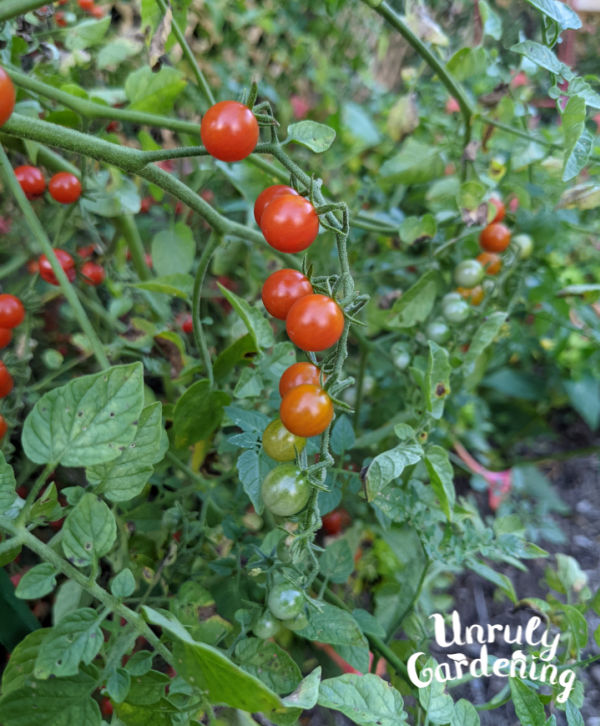
Sweet Pea Currant
- Plant: Currant Tomato (Lycopersicon pimpinellifolium)
- Determinate or Indeterminate: Indeterminate
- Color: Red
- Days to Maturity: 75-80 (from transplant)
- Frost-Hardy: No
- Lifespan: Tender perennial grown as an annual
- When to Plant: Start indoors 6-8 weeks before estimated last frost date
- Edible: Yes
- Part Eaten: Fruit
- Requires Support: Yes
Where to Buy
We purchased our seeds from Seed Savers Exchange, and they have done beautifully. I can confidently recommend their currant tomato seeds as a good source, but other places also carry currant tomatoes: a quick search on the internet will bring up more options for you.
How to Grow
Start currant tomatoes exactly as you would regular tomatoes. It’s worth noting that you may want to plant your currant tomatoes a bit further away from other plants- 3-4 feet away, instead of 2-3, because very healthy plants can get huge, and tend to sprawl a good bit more, making them potentially at risk of eating any smaller, weaker plants in their range!
Starting Seeds
Start your seeds inside 6-8 weeks before your estimated final frost date. The seeds should be covered with 1/4 an inch of soil, and kept evenly warm, moist, and in bright light until the seeds germinate.
Transplant the seedlings into new, larger containers with fresh soil several times as they grow, burying the stem partially each time. This will give them a strong, healthy root system.
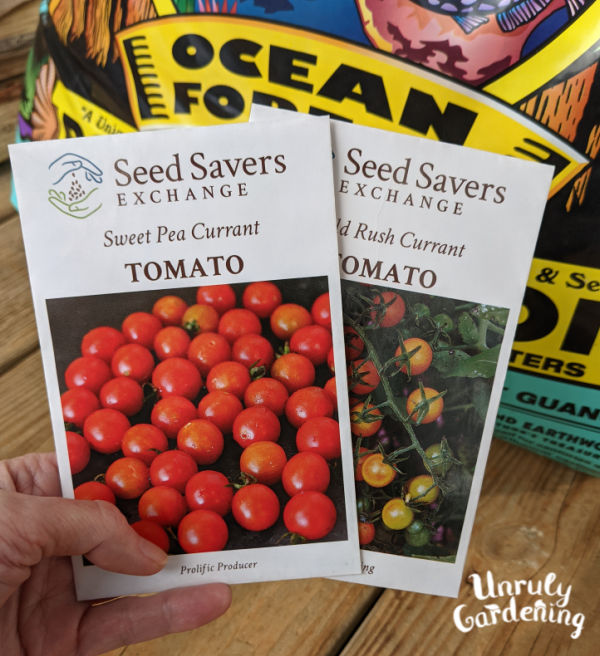
Seedlings may require supplementary fertilizing with fish emulsion while growing, depending on the nutrients present in your growing medium. A rich medium will require less or potentially no additional fertilizer, while a nutrient-barren medium such as a seed-starting medium will require more.
Once absolutely all risk of frost has past, it is safe to plant your tomatoes outside. Space your tomato plants 3-4 feet apart from each other. It’s a good idea to go ahead and place stakes or cages around the plants as you plant.
Soil
Ideally, plant your currant tomatoes in soil with a pH of 6.0 to 7.0. This is the range tomatoes do best in- more accurately, 6.5 to 7.0, with preference more towards 6.5, but as long as it’s between 6.0 to 7.0, the tomatoes should do well.
The soil should be amended to be loose and fertile, rich with organic matter- several inches of compost worked in will do wonders! The looseness of the soil is for the roots, as hard, compact soil is hard for them to grow in.
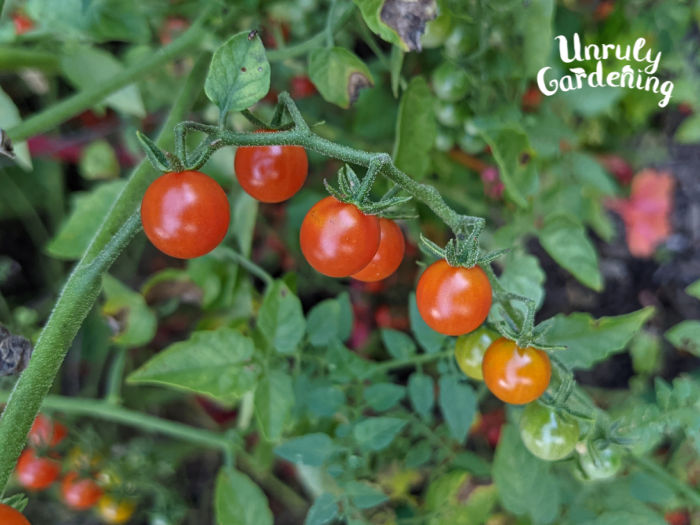
Light
Give your currant tomatoes all the sun you can! 6-8 hours is the minimum they want, and they’ll soak up any extra sunlight they can get.
Water
When watering, do everything you can to minimize splashing on the leaves- tomatoes are very prone to soil-borne diseases, and splashing muddy soil up on them isn’t good for their health!
Water deeply at the base of the plant when you water your tomatoes. How often and how much you’ll need to water is completely dependent on your individual area: it’s a mix of soil type, climate, and how much rain you naturally get in your location. In some parts of the world, you might have to water daily, while in others, once or twice a week is enough.
The best thing to do is to feel your soil, then decide if you think your plants need watering or not. If the soil is bone-dry as far down as you can poke your fingers into the soil, it’s a safe bet that your tomatoes need water.
Mulching will reduce the frequency you’ll need to water, and helps to keep the soil evenly moist over longer periods of time.
Other Care
The main thing to worry about for your currant tomatoes is their escape from their captivity! Currant tomatoes, with their sprawling habit, will escape their cages and stakes unless you stay on top of tucking them back in.
As a last note, I strongly recommend mulching these tomatoes. Not only does it reduce the frequency of weeds, but in our gardens, we noticed that the difference between an unmulched currant tomato plant and a mulched one was night and day- the unmulched one stayed very small, while the mulched one absolutely exploded; sprawling out a good four or five feet all around and produced loads of tomatoes.
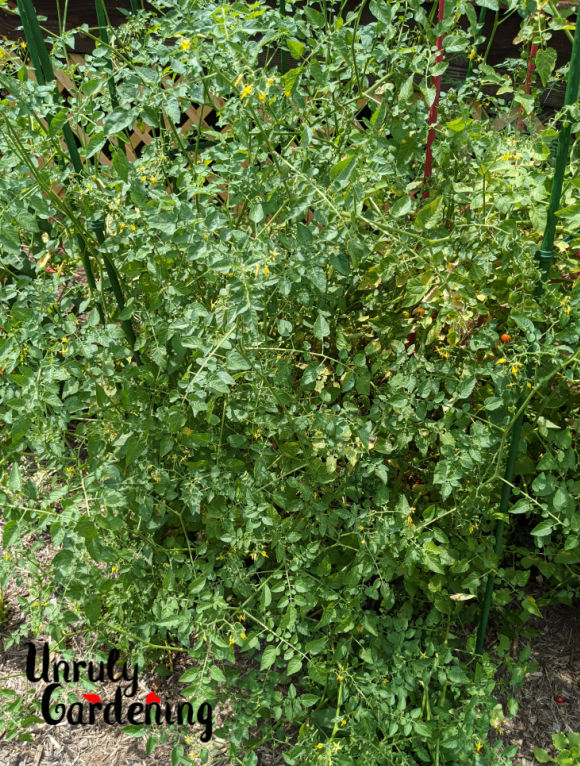
Harvesting
When harvesting the currant tomatoes, you want them to be very ripe, but not overripe. It can be a bit hard to tell exactly when they’re ripe the first few times, but once you get the hang of it, you’ll have plenty of delicious tiny tomatoes to eat!
Gold Rush Currant tomatoes are ripe when they’re a rich, yellow-orange- when they’re just a pale yellow, they’ll taste under-ripe. Any ‘green’ flavor means it’s not ready yet!
Sweet Pea Currant tomatoes are ripe when they’re evenly red all over, with perhaps a little tinge of orange over it. They’re a bit trickier to tell when ripe than Gold Rush- but when you bite into them, they should have a rich, full, sweet tomato flavor, with no hint of under-ripeness.
Accidental picking of slightly-under-ripe currant tomatoes can sometimes fixed by letting them sit on the countertop for a day or two.
Keep your harvested currant tomatoes on the counter to use as you will- stir through them, picking through daily to make sure none of them are withering, molding, or rotting, and discard any bad ones.
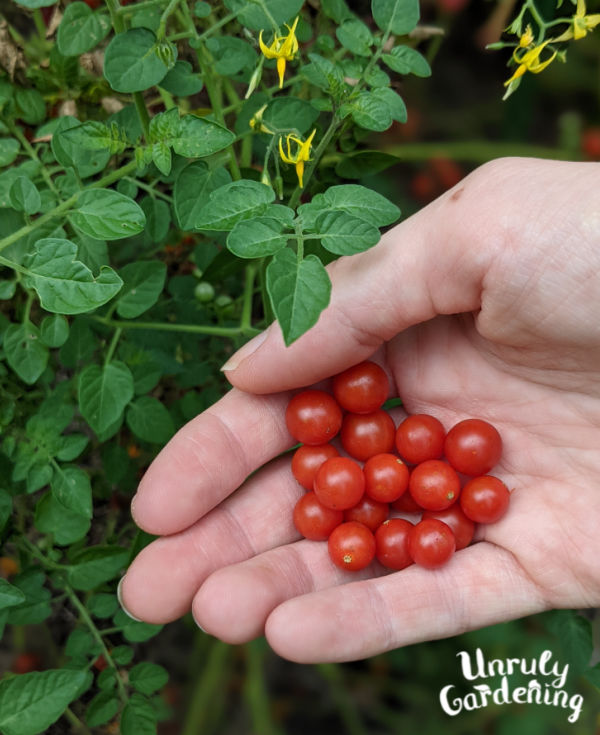
Using
The most common use of these tomatoes is to pop handfuls in your mouth as a snack! These sweet little tomatoes are delicious whether you’re eating them out in the garden, sun-warmed tiny bites of vivid tomato flavor popping between your teeth as you browse your plants, or if you’re stirring through the bowl of today’s harvest and tossing any particularly tasty-looking ones in your mouth as you go.
Another way to use them is to put them in salads- do you hate having to chop a tomato up when you make salads? Do you always think that cherry tomatoes are too large of a bite, but still want that delicious tomato flavor mixed in with the lettuce and the dressing and the cucumbers? Toss in a handful of currant tomatoes! No chopping required, and you still get that full, bright, tangy tomato flavor!

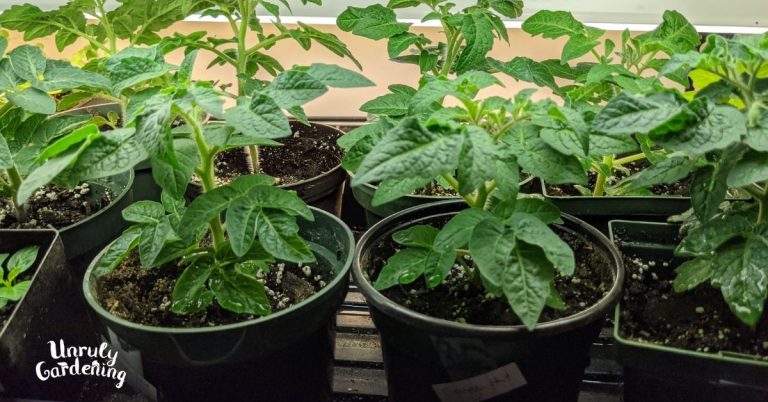
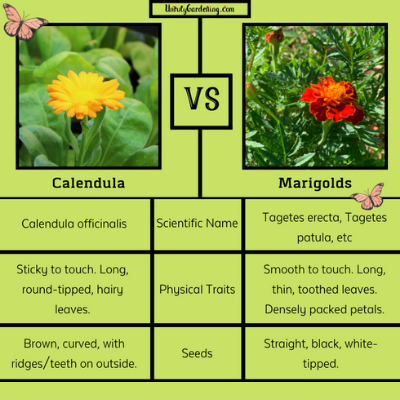
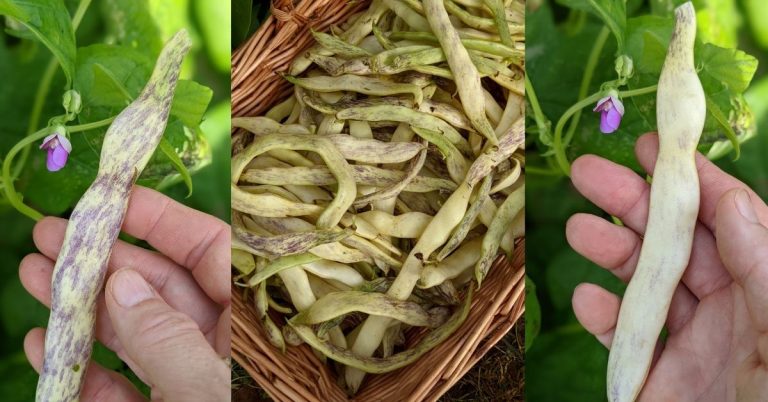
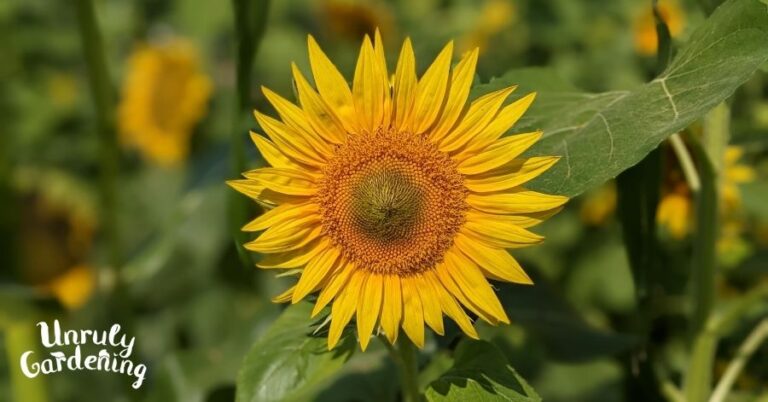
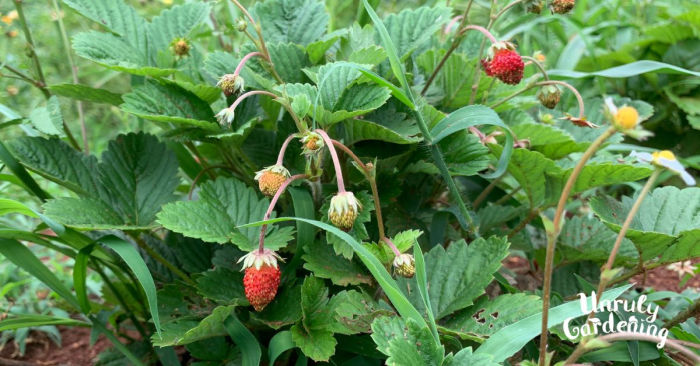
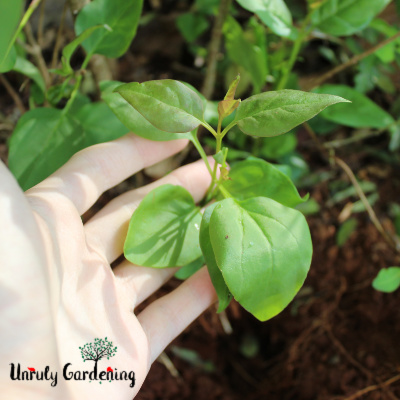
I have a lovely small greenhouse. The sweet pea tomatoes I have tumbling over my hanging basket sent some volunteers into a large pot and they’re doing great as a second crop! Can I move the pot to the greenhouse to grow on a bit or do they need pollinators. MI zone 6B.
Hi Sue! How wonderful to have a lovely small greenhouse & a second crop of sweet pea tomatoes to enjoy! Yes, you can move them to the greenhouse to grow longer – for pollination, just take your finger and gently flick each flower daily, until the flower dries up/falls off.
We grew red currant tomatoes this year and were delighted with the performance. The bunches of fruits are photo-worthy, perfectly graduating from green to red. Our season ends abruptly and I cut dozens of bunches to bring inside. They ripened beautifully over the next month. That’s right, a month! The tiny size makes them easy to add to the top of a pizza or knead into bread dough. May I share a link? this recipe works wonderfully with currant tomates rather than sun-dried.
https://www.kingarthurbaking.com/recipes/no-knead-cheese-and-tomato-garlic-bread-recipe
That’s wonderful to hear how the bunches kept ripening for you! Thanks also for sharing the recipe link – We love King Arthur recipes too! 🙂
I’ve yet to come across a thorough description of how these tomatoes grow up to be so sprawling. Usually you can pinch off the suckers and get a tomato to grow in a vertical direction even if tall. All the growers say is that they need lots of room so it’s hard to imagine how to prepare to rein them in or what sort of staking or support they’ll require.
Hi Thomas, That’s a great point, thanks for sharing it!
I sorted through my garden photos from past years but couldn’t find any more photos of currant tomato plants fully grown in the garden.
The photo in this article was taken in my front flower bed, where I had tucked an extra plant.
My hubby usually does nice neat wire tomato cages, but I kind of propped that one plant up with stakes as it grew so it isn’t a good example of proper staking.
We have more seedlings ready to plant in the garden as soon as it dries out from rain.
I’ll try to document it better this year & update the photos then!
Just one plant will take up quite a bit of room compared to most other tomatoes, though we don’t pinch off suckers or try to control our tomatoes for space, so am not certain how easy it is to constrain its bush-like tendencies.